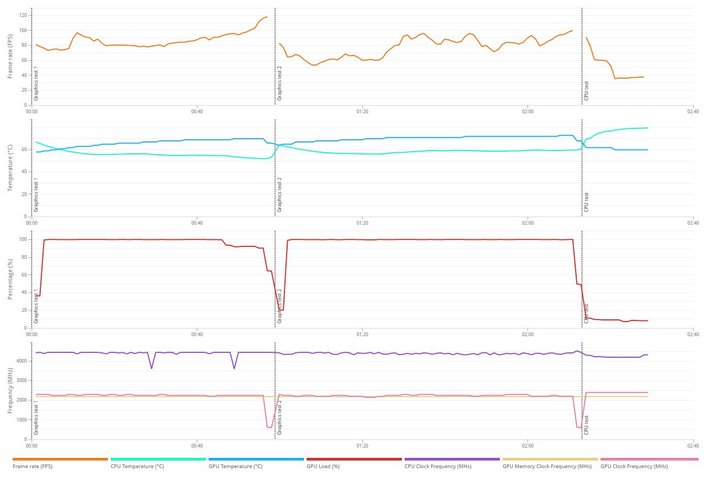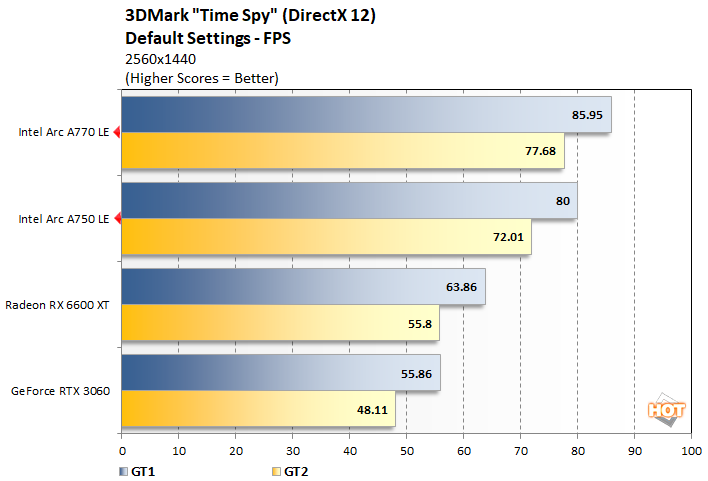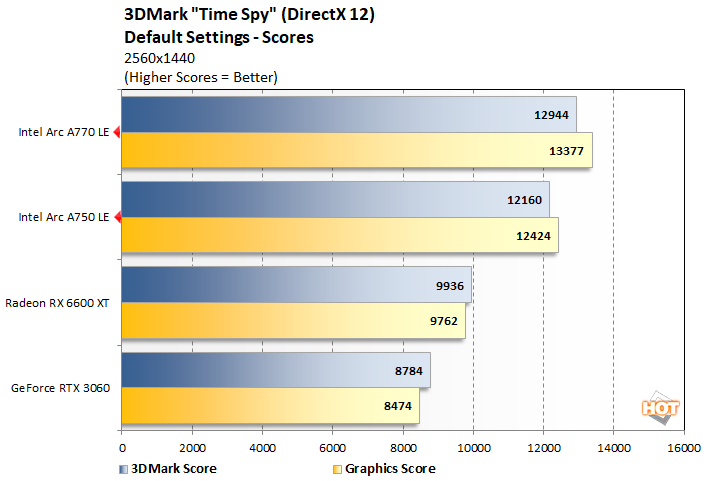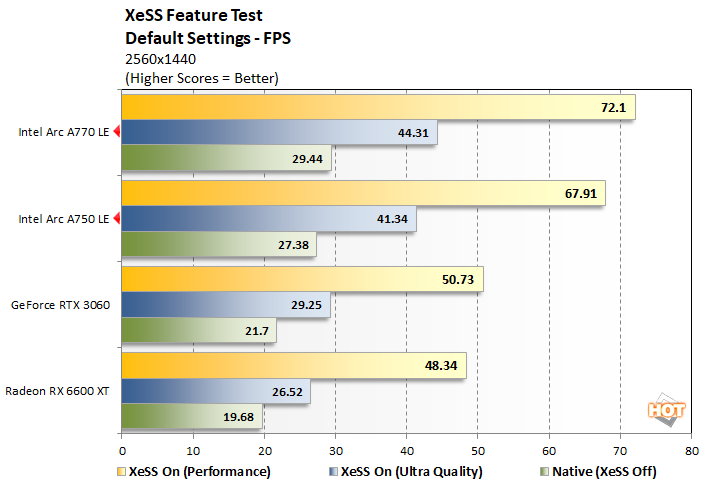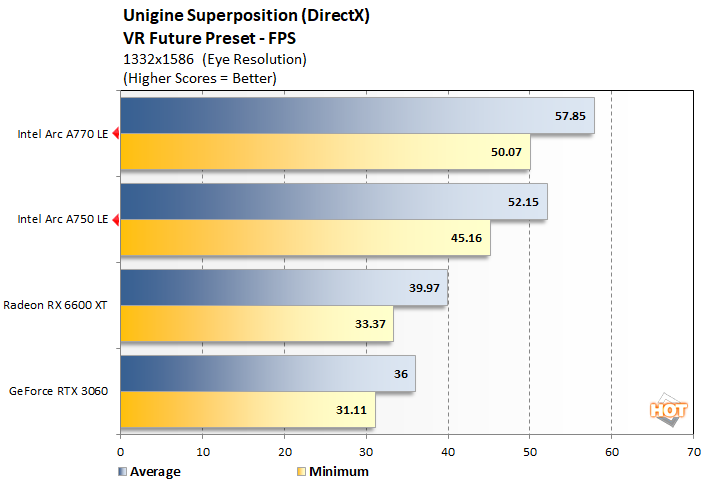Intel Arc A770 And A750 Limited Edition Review: Putting Alchemist To The Test
Intel Arc A750 And A770 Limited Edition: UL, Synthetic, Crytek And VR Benchmarks
3DMark Time Spy is a synthetic DirectX benchmark test from UL. It features a DirectX 12 engine built from the ground up to support bleeding-edge features like asynchronous compute, explicit multi-adapter, and multithreading. Time Spy is designed to test the DX12 performance of the latest graphics cards using a variety of techniques and varied visual sequences. This benchmark was developed with input from AMD, Intel, Microsoft, NVIDIA, and the other members of the UL Benchmark Development Program, to showcase the performance and visual potential of graphics cards driven by close-to-the-metal, low-overhead APIs.
UL 3DMark Time Spy DX12 Benchmarks
UL 3DMark Port Royal Ray Tracing Benchmarks With Arc A770 And A750
Port Royal was released as an update to UL’s popular 3DMark suite. It is designed to test real-time ray tracing performance of graphics cards that support Microsoft DirectX Raytracing, or DXR. Although DXR is technically compatible with all DX12-class GPUs, the graphics card must have drivers that enable support for the feature.
Intel Arc XeSS And DXR Feature Tests
We also tested the cards with UL's DirectX Ray Tracing Feature test and a beta XeSS feature test that will be incorporated into a public release of 3DMark soon...As was the case in the Port Royal ray tracing test, the Intel Arc A750 And A770 Limited Edition significantly outpaced the competition here. According to these synthetic initial ray tracing tests at least, Intel's off to a promising start...
3DMark's XeSS feature test will run on either the XMX engines on Intel Arc GPUs or using DP4a other GPUs, assuming they've got the necessary capabilities and software support. The tests can be run in any of XeSS' modes (Performance, Balanced, Quality, or Ultra Quality), but we focused solely on the "best" and "worst" case scenarios here. As you can see, whether rendering natively at 1440p or using XeSS upscaling, the Intel Arc A750 And A770 Limited Edition led the pack, with Performance mode showing a >2X performance uplift.
The XeSS feature test also has a built-in tool for comparing the image quality of various modes, with per-frame precision. The two comparisons above were captured with the Radeon RX 6600 XT, which runs XeSS using the DP4a instruction set, and Intel Arc A770 using its XMX engines. This is important to note, because XeSS uses different AI models, depending on which type of acceleration engine is used.
Looking through the comparisons above, two things are evident. XeSS Ultra Quality mode offers similar or perhaps slightly better output than the native rendering here, and when using the XMX engines, it is somewhat sharper and higher quality than the Radeon with DP4a -- differences are most evident in the green glow at the center of the pylon and in the floor. Comparing Performance to Ultra Quality mode also yields a distinct advantage in sharpness and overall clarity for the lower-performing Ultra Quality mode, but Performance mode still looks pretty good.
Crytek Neon Noir Benchmarks
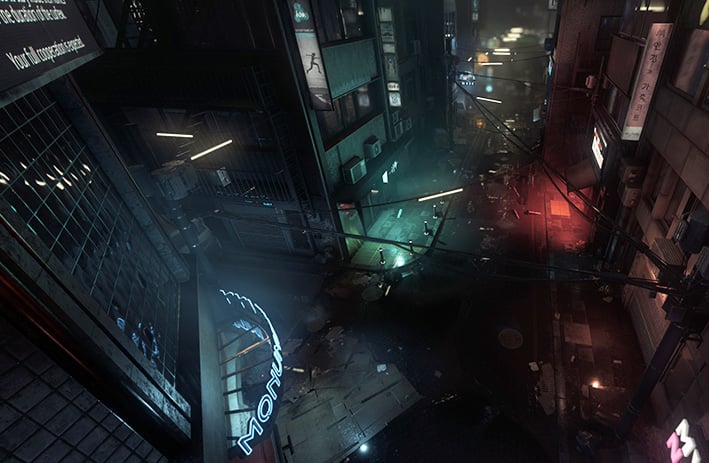
Crytek Neon Noir
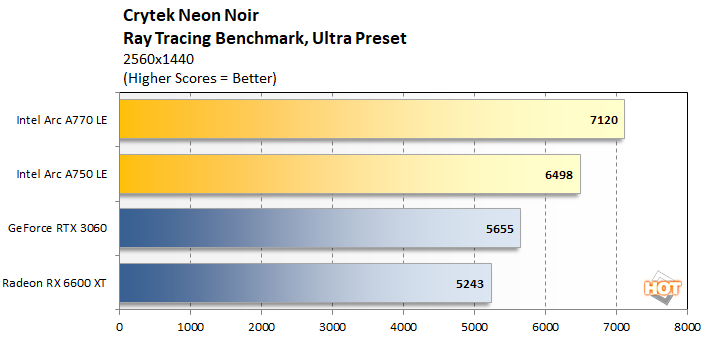
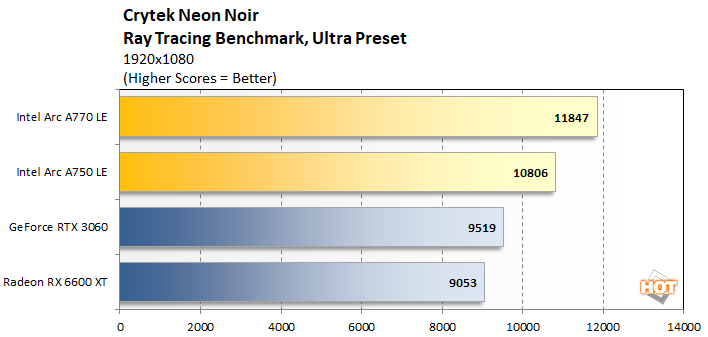
VR Benchmarks: VR Mark & Unigine Superposition
Superposition is the latest benchmark from Unigine, powered by the UNIGINE 2 Engine. It offers an array of benchmark modes, targeting gaming workloads as well as VR, with both DirectX and OpenGL code paths. There is an extreme hardware stability test built-in too. Unigine Superposition uses the developer’s unique SSRTGI (Screen-Space Ray-Traced Global Illumination) dynamic lighting technology, along with high quality textures and models, to produce some excellent visuals. We ran Superposition's VR Future benchmark to compare the performance of all of the graphics cards featured here.Superposition's VR Future benchmark also has the Intel Arc A750 And A770 Limited Edition leading the pack. With this forward-looking virtual reality benchmark, Intel's new Arc GPUs continue to have an edge.
UL VR Mark Blue Room Benchmarks
UL's VRMark is designed to test a PC’s readiness for the HTC Vive and Oculus Rift virtual reality headsets. The benchmark does not, however, require that one of the headsets is attached to the PC to run and it uses an in-house graphics engine and content to ensure comparable results between different platforms. We ran the "Blue Room" VRMark test at defaults settings here, which is currently the most taxing test offered by the tool.Although the deltas separating the cards are a bit smaller, the Intel Arc A750 And A770 Limited Edition also led the GeForce and Radon in VRMark's most-taxing benchmark scene.
So far so good for Intel's new Arc GPUs. But now it's time for some actual game testing...


